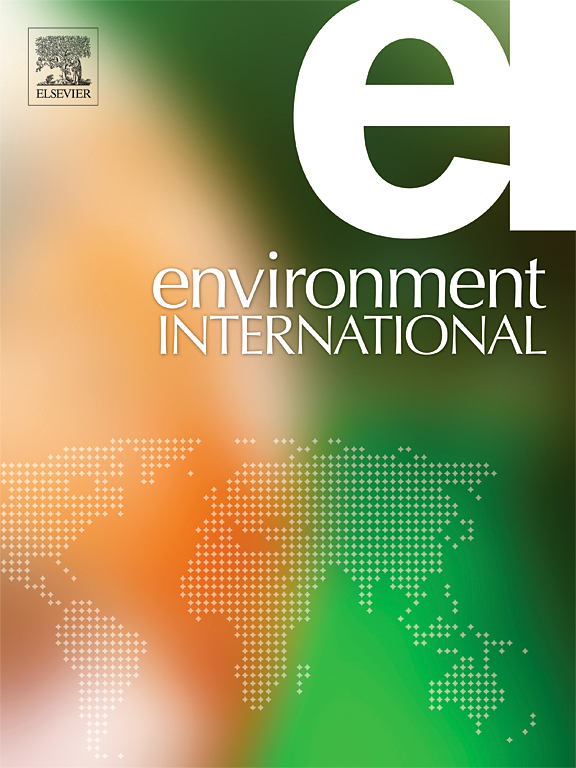瑞典城市集水区雨水池中微污染物的大范围筛选
IF 10.3
1区 环境科学与生态学
Q1 ENVIRONMENTAL SCIENCES
引用次数: 0
摘要
雨水是指降水事件产生的水。在城市化地区,不透水的地表导致径流增加,从而将城市环境中的污染物转移到淡水水体中。雨水池的作用是在雨水进入接收水体之前对其进行处理。然而,它们修复有机微污染物的效率在很大程度上仍然未知。因此,有必要探索这些人造屏障修复有机微污染物的能力。在这项工作中,我们在不同的水文事件中调查了两个雨水池的进水和流出水流,通过大范围筛选有机微污染物来评估它们对污染运输的贡献。已经检测到几种化学物质。不同水塘样本的化学成分差异,突显集水区的活动严重影响了雨水的成分。出乎意料的是,在干旱和雨季,雨水的化学特征是相似的。此外,在流出的雨水中发现了更多的污染,这表明处理不当和以前保留的化学品可能再溶解,突出表明需要对人造雨水池进行更好的处理和补救战略,以确保接收水体的可持续性。本文章由计算机程序翻译,如有差异,请以英文原文为准。


Wide-scope screening of micropollutants in stormwater ponds within Swedish urban catchments
Stormwater refers to the resulting water from precipitation events. In urbanized areas, impervious surfaces result in an increased runoff and, consequently, mobilize pollutants occurring in urban environments to freshwater bodies. Stormwater ponds function as a treatment step of the water before it enters the recipient water body. However, their efficiency to remediate organic micropollutants remains largely unknown. Hence, there is a need to explore the ability of these man-made barriers to remediate organic micropollutants. In this work, we have investigated both influent and effluent water streams from two stormwater ponds during distinct hydrological events to assess their contribution to pollution transport by means of wide-scope screening of organic micropollutants.
Several chemicals have been detected. The observed differences in the chemical profile in samples from different ponds highlighted that the activities in the catchment area heavily impacted the composition of the stormwater. Unexpectedly, the chemical profiles of the stormwater during dry and rainy periods were found to be comparable. Additionally, increased contamination was detected in effluent stormwater, indicating poor treatment and the potential redissolution of previously retained chemicals, highlighting the need for better treatment and remediation strategies in man-made stormwater ponds to ensure sustainability of recipient water bodies.
求助全文
通过发布文献求助,成功后即可免费获取论文全文。
去求助
来源期刊

Environment International
环境科学-环境科学
CiteScore
21.90
自引率
3.40%
发文量
734
审稿时长
2.8 months
期刊介绍:
Environmental Health publishes manuscripts focusing on critical aspects of environmental and occupational medicine, including studies in toxicology and epidemiology, to illuminate the human health implications of exposure to environmental hazards. The journal adopts an open-access model and practices open peer review.
It caters to scientists and practitioners across all environmental science domains, directly or indirectly impacting human health and well-being. With a commitment to enhancing the prevention of environmentally-related health risks, Environmental Health serves as a public health journal for the community and scientists engaged in matters of public health significance concerning the environment.
 求助内容:
求助内容: 应助结果提醒方式:
应助结果提醒方式:


